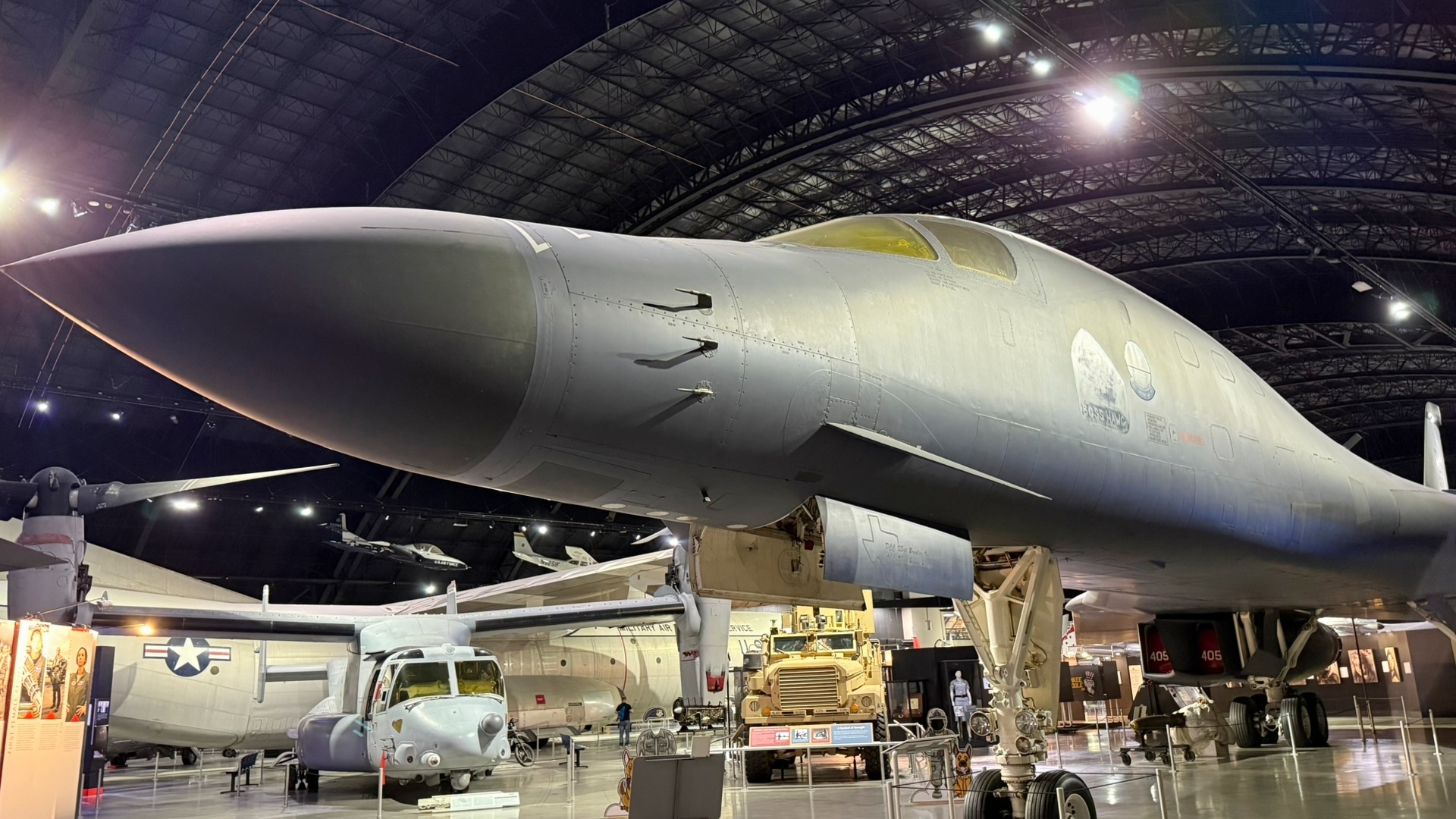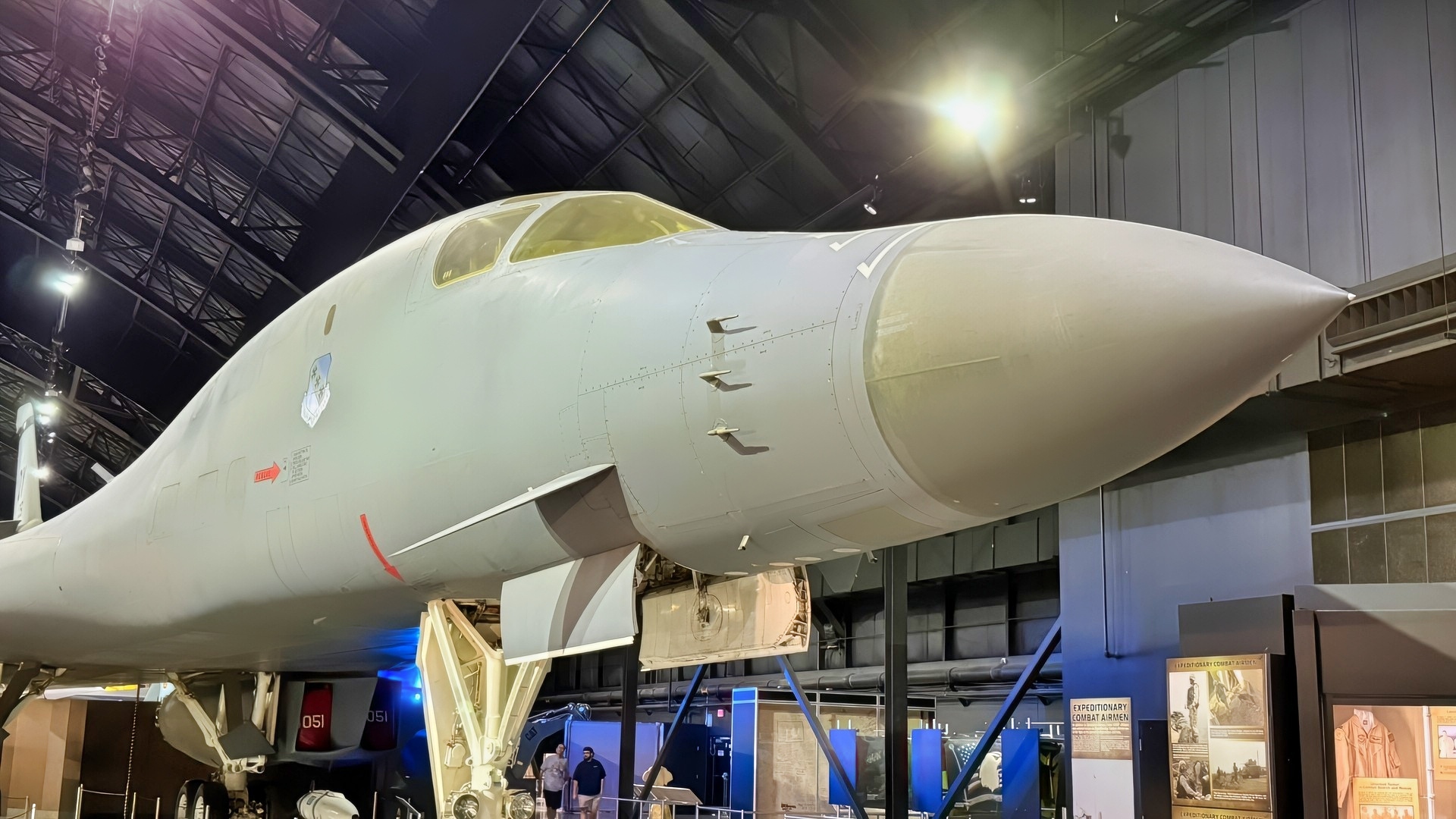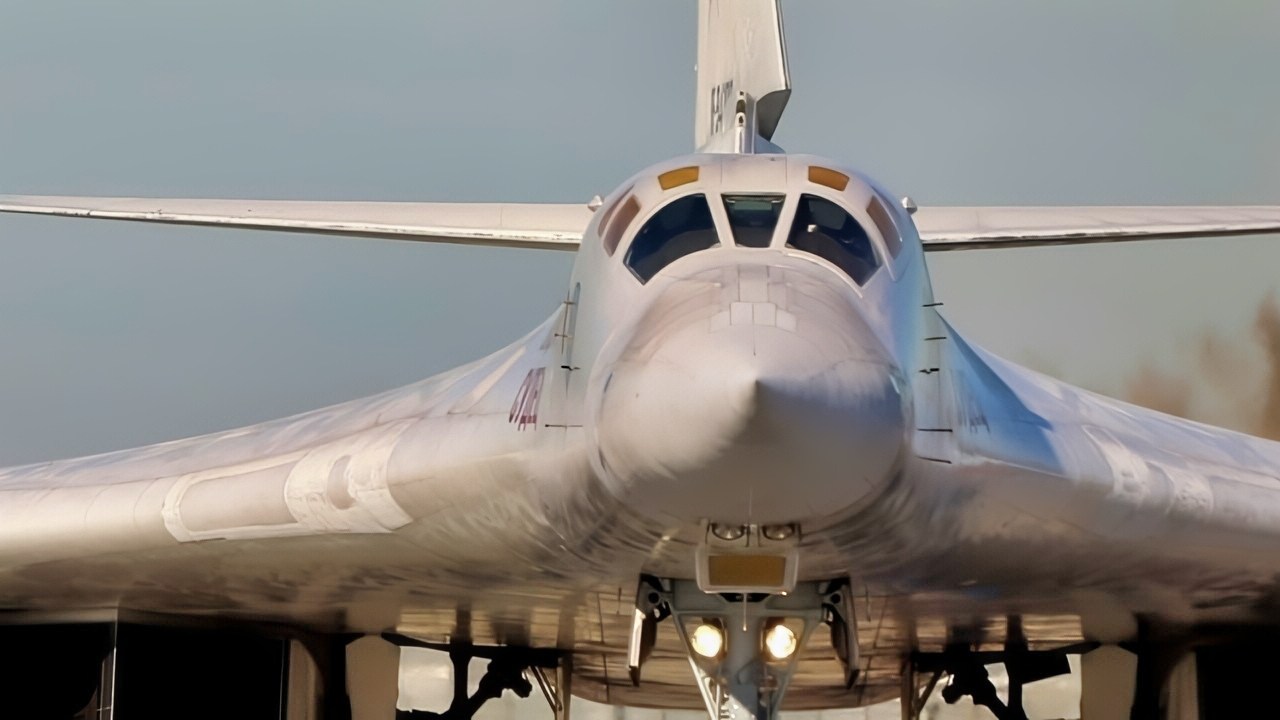Key Points and Summary – The Tupolev Tu-160 “Blackjack,” the world’s largest and fastest (Mach 2.05) military aircraft, was the Soviet Union’s rival to the American B-1B Lancer.
-Designed as a strategic missile carrier with variable-sweep wings, its production was halted in 1992 after the Soviet collapse, with Ukraine inheriting and later scrapping most of the fleet.

Tu-160 Bomber Russian Air Force. Image Credit: Russian State Media.

Russia Tu-160 Bomber. Image Credit: Creative Commons.
-In 2015, Russia made the significant decision to restart the Tu-160 production line from the ground up, creating modernized Tu-160M/M2 variants.
-Russia, which currently operates about 23 of these bombers, aims to build a fleet of 50 by 2030.
Russia Wants More of the Old Tu-160 Bomber From the Cold War: This Is Why
The Tupolev Tu-160 White Swan (NATO reporting name: Blackjack) is one of the largest military aircraft ever built. It was designed to compete against the American B-1B Lancer as the Soviet Union’s fastest and heaviest missile carriers.
After the fall of the USSR, the Russian Federation maintained a small fleet of Tu-160s. However, with Russia’s new aggressive aspirations, the Russians have been looking to modernize and expand their inventory.
Responding to the B-1B Lancer
The Tu-160 was designed as a direct response to the American B-1B Lancer. While the USSR already had a supersonic bomber with the Tu-22M, the emergence of the B-1 necessitated a larger bomber with greater speed and a larger payload.

Sideview of B-1B Lancer Bomber. Image Credit: National Security Journal.

B-1B Lancer 2025 National Security Journal. Image Credit: Harry J. Kazianis/NSJ.
The Soviets, therefore, launched a multi-mission bomber competition.
The requirements were a service ceiling of around 18,000 meters, a top speed of around Mach 2.3, a total range of around 12,000 kilometers, and a payload capacity of around 45 tons.
Three major Soviet design bureaus —Tupolev, Myasishchev, and Sukhoi —submitted proposals.
Tupolev’s design, internally designated as Aircraft 160M, ultimately won the competition. Drawing on experience from earlier projects such as the Tu-144 supersonic airliner, Tupolev engineers created a design that blended advanced aerodynamics with sheer size and power.
This decision marked the beginning of the Tu-160 program, which would produce the largest and fastest operational bomber in history.
Development Timeline
Initial studies and competition occurred between 1967 and 1972, and Tupolev was officially awarded the contract in 1975.
The prototype flew on December 18, 1981, and production approval was granted in 1984. Serial manufacturing began at the Kazan Aircraft Production Association, and the Tu-160 officially entered service with the Soviet Air Forces in 1987.
The Tu-160 was the last strategic bomber designed for the Soviet Union before its collapse. Between 1984 and 1992, only 36 to 41 aircraft were built due to economic constraints and the dissolution of the USSR.

Tu-160M Bomber from Russia. Image Credit: Russian Military/Creative Commons.
Production ceased in 1992, leaving Russia and Ukraine to divide the fleet. Russia retained 13 aircraft, while Ukraine inherited 19. In the late 1990s, under the Nunn–Lugar Cooperative Threat Reduction program, Ukraine scrapped most of its bombers.
However, Russia purchased eight back, consolidating the fleet under its Long Range Aviation branch.
Design of the Tu-160 White Swan
The Tu-160’s design was centered on variable-geometry wings, which could sweep between 20 degrees and 65 degrees.
This allowed the aircraft to optimize lift and drag for different phases of flight: extended wings for takeoff and cruising, and swept wings for high-speed penetration.
Measuring at 54 meters in length, the Tu-160 is one of the largest bombers ever built, with a wingspan of 56 meters when fully extended and 36 meters when swept back.
Its maximum takeoff weight exceeded 275 metric tons, making it the heaviest combat aircraft ever built. Power came from four Kuznetsov NK-32 afterburning turbofan engines, each producing 55,000 pounds of thrust. These engines enabled the Tu-160 to reach speeds of Mach 2.05 at altitude and achieve a range of over 12,000 kilometers without refueling, giving it true intercontinental capability.
Unlike previous Soviet bombers, the Tu-160 carried no defensive armament, like a tail gun or anything of that nature. Instead, it relied on speed, altitude, and standoff missile capability for survivability.
Internally, the aircraft housed two weapons bays, each equipped with rotary launchers for cruise missiles.
Its primary armament included Kh-55 and later Kh-101/Kh-102 air-launched cruise missiles, allowing nuclear or conventional strikes from outside enemy air defense zones. With a payload capacity exceeding 40 metric tons, the Tu-160 was designed as a strategic missile carrier rather than a traditional bomb-dropper.
Initially, the Tu-160 served as a nuclear deterrent during the final years of the Cold War. After the Soviet collapse, its role diminished due to budgetary constraints, but the aircraft remained too essential to scrap.
In 2015, the Tu-160 saw its first combat deployment during Russia’s intervention in Syria, launching Kh-101 cruise missiles against targets. It has since participated in operations over Ukraine and conducted high-profile overseas deployments to Venezuela and South Africa, showcasing its global reach and reaffirming its role as a strategic asset.
The Tu-160 is Back and Better Than Ever: Bad Idea?
Despite production ending in 1992, the Tu-160 was still immensely valuable to the Russian Federation. Sometime in the 2000s, work began to modernize the aircraft to keep it relevant.
The new and improved Tu-160M received upgrades to its avionics and electronics.
The upgraded bombers were also able to carry new Kh-555 cruise missiles. Another modernized Variant, the Tu-160M2 receives even more upgrades with even better avionics, an improved radar, and more efficient engines.
In 2015, the Russian Ministry of Defense announced that production of new Tu-160 bombers from the ground up would recommence, making it the first and only strategic bomber produced since the end of the USSR. The goal, according to Russian officials, is to increase the country’s inventory to thirty or more active aircraft by 2030.
In 2022, this number increased to 50. As of writing this, Russia operates around 23 Tu-160 bombers of different variants, five of which are undergoing maintenance and repairs.
The challenge, of course, is that this might not be the best idea in 2025, and there’s a problem with it over the long term. The Tu-160 is not stealth and is an old design. Time will tell if this was a wise call.
About the Author: Isaac Seitz
Isaac Seitz, a Defense Columnist, graduated from Patrick Henry College’s Strategic Intelligence and National Security program. He has also studied Russian at Middlebury Language Schools and has worked as an intelligence Analyst in the private sector.
More Military
The British Army’s Big Challenger 3 Tank Mistake Still Stings
F-35 Stealth Fighter Program Has Passed the Point of No Return
The Iowa-Class Battleships Have A Message for Any Navy on Earth
Canada Has a Big Message for the Eurofighter Typhoon
The Mach 2 F-16 Fighting Falcon Fighter Has a Message for the U.S. Air Force










